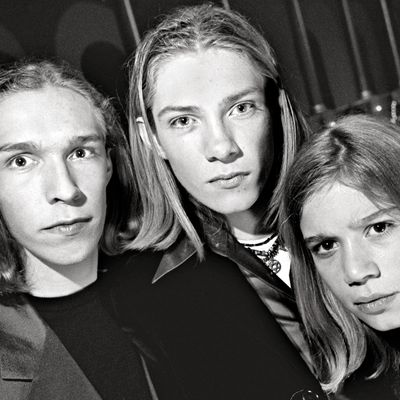
Justin Bieber was 16 and set to perform before 17,000 people at 2010ÔÇÖs New York State Fair when he caught a cold ÔÇö an especially troubling turn of events given that testosterone was then ravaging his high register. ÔÇ£If JustinÔÇÖs voice was a two-story house,ÔÇØ says Jan Smith, the Atlanta vocal coach who guided Bieber through the crisis, ÔÇ£he could get near where the top steps shouldÔÇÖve been, but they were missing.ÔÇØ
Bieber postponed that state-fair show and, according to Smith, received a steroid shot to guard against any further inflammation. A cracking voice wasnÔÇÖt much of a problem. Even though his speaking voice had deepened, Bieber was still able to sing effectively in higher registers. Over time he maintained an appealing, chirpy timbre even as his singing voice seemed to drop, much like Michael Jackson did in his transition from Motown child to Off the Wall man. (ÔÇ£The color of the voices change, so they sound lower,ÔÇØ Smith explains about these singersÔÇÖ abilities to weather pubertyÔÇÖs changes, ÔÇ£but from a pitch perspective, theyÔÇÖre not.ÔÇØ) If only every star could manage puberty quite so seamlessly. Frankie Lymon, the 13-year-old soprano behind 1956ÔÇÖs ÔÇ£Why Do Fools Fall in Love,ÔÇØ saw his life and career bottom out after his voice dropped; he died of a heroin overdose at 25. Cody Simpson, the Australian teen who has opened for Bieber, developed a deeper voice and watched his fan base shift. A changed voice is also a problem for the starÔÇÖs backing musicians. ÔÇ£When the singer says, ÔÇÿWe have to adjust the key,ÔÇÖ every instrument and backing singer has to change keys, too,ÔÇØ says Dave Stroud, a vocal coach who has worked with Simpson, Bieber, and One Direction.
All teen singers, not just boys, undergo the Change: ÔÇ£Girls go through it, too, but not as dramatically,ÔÇØ Stroud says. Unlike poor Lymon, todayÔÇÖs pubescent pop stars can use Auto-Tune and other forms of electronic pitch correction. That goes for onstage, too. The state of the music business dictates that stars make their big money on the road, so in-concert pitch correction is crucial, despite many singersÔÇÖ reluctance. (Stroud calls it ÔÇ£the least favorite tool, because itÔÇÖs the least authentic.ÔÇØ)
Even in the preÔÇôPro Tools era, producers used studio trickery to mask maturing voices. Taylor Hanson had sung an early version of HansonÔÇÖs 1997 smash ÔÇ£MMMBopÔÇØ in a bright, exciting key, but the then-14-year-oldÔÇÖs voice cracked while rerecording the song for the bandÔÇÖs major-label debut. After many failed takes, producers slowed down the recording tape, then sped it up later to raise his pitch. ÔÇ£That high voice was going away,ÔÇØ says Steve Greenberg, the music executive who discovered the band. ÔÇ£Taylor never sang it in that key again.ÔÇØ
*This article appears in the October 3, 2016, issue of New York Magazine.

